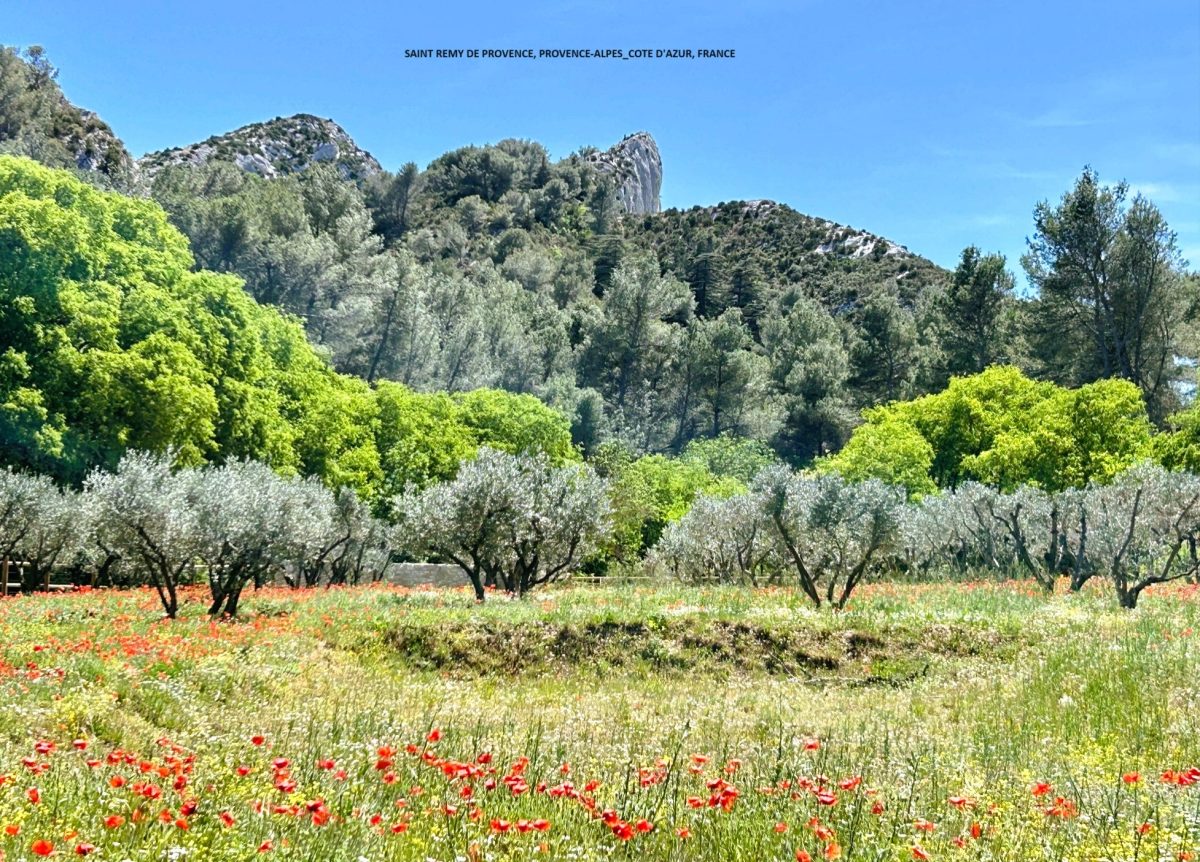We’re still at Camping O Muino up on the coast near Oia but we took time out to do a round trip of some 60 miles to the small Galician city of Tui (Tui in Galician & Portuguese; Tuy in Castilian Spanish).
Tui is a city of some 15,000 people sitting on the River Mino directly opposite Portugal’s Valenca de Minho. A metal road and rail bridge (the International Bridge) connects the two towns and it can be walked across although, I didn’t know that at the time or I might have crossed the river for a look at Valenca. No, that’s not true. The star attraction of Tui is it’s magnificent 11th-13th century Catedral de Santa Maria de Tuy and I was determined to see it above all else.
Built on the city’s highest point in a mix of Romanesque and Gothic styles, it is a well preserved fortress cathedral complete with battlements and crenellated towers. The oldest sections and the imposing entrance are Romanesque but most of the exterior walls are in the Gothic style.
There is a 5 Euro entrance fee, which I think is waived for ‘pilgrims’ travelling to Santiago, but I wasn’t going to complain about the price. A very informative audio guide explaining some of the architecture and the history of the cathedral came with the entrance ticket.
Inside the cathedral is beautiful and there is so much of interest that my time there simply flew by. I’ve never been particularly interested in relics and/or church museums but the cathedral holds so many relics that the Chapel of Saint Telmo, in which they are held, is more often than not referred to as the Chapel of Relics. I found the small museum more interesting than the Chapel of Saint Telmo not least because, in addition to displaying the usual church treasures such as processional sceptres, chalices etc, there are two ‘sanbenitos‘ on display. Sanbenitos I was informed are penitential garments worn by alleged heretics who were prosecuted by the Inquisition in the 17th century.
My favourite parts of the cathedral are, without any doubt, the 12th century Chapter House and, especially, the 13th century Gothic style Cloisters. They are truly magnificent. A very pleasant surprise was the narrow staircase off of the Cloisters which leads up to the battlements and spectacular views across the River Mino towards Portugal’s Valenca.
Some photos: The first two (of the north entrance) were taken from above the Cloisters where Vanya and our two dogs were waiting patiently for me to finish in the cathedral. The dogs saw me but Vanya didn’t.
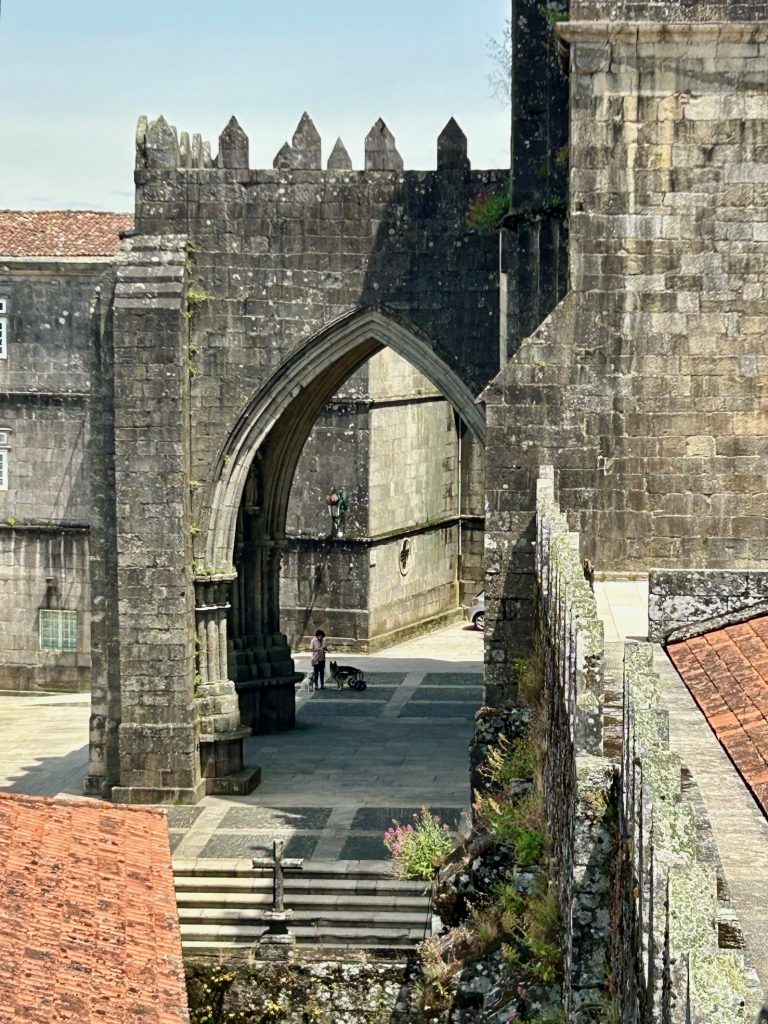
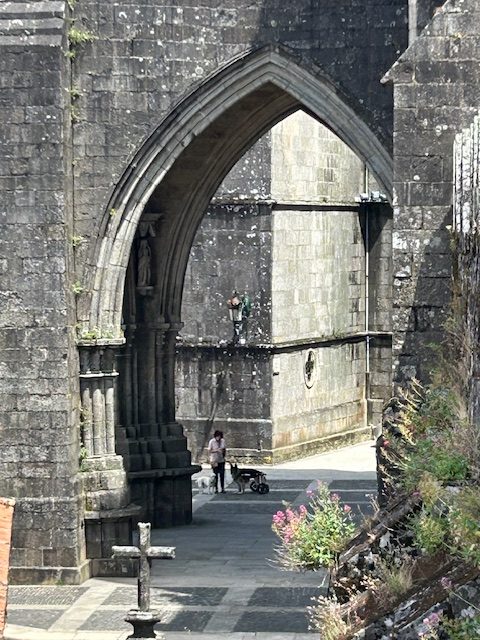
These next two photos show the well kept cloister gardens…
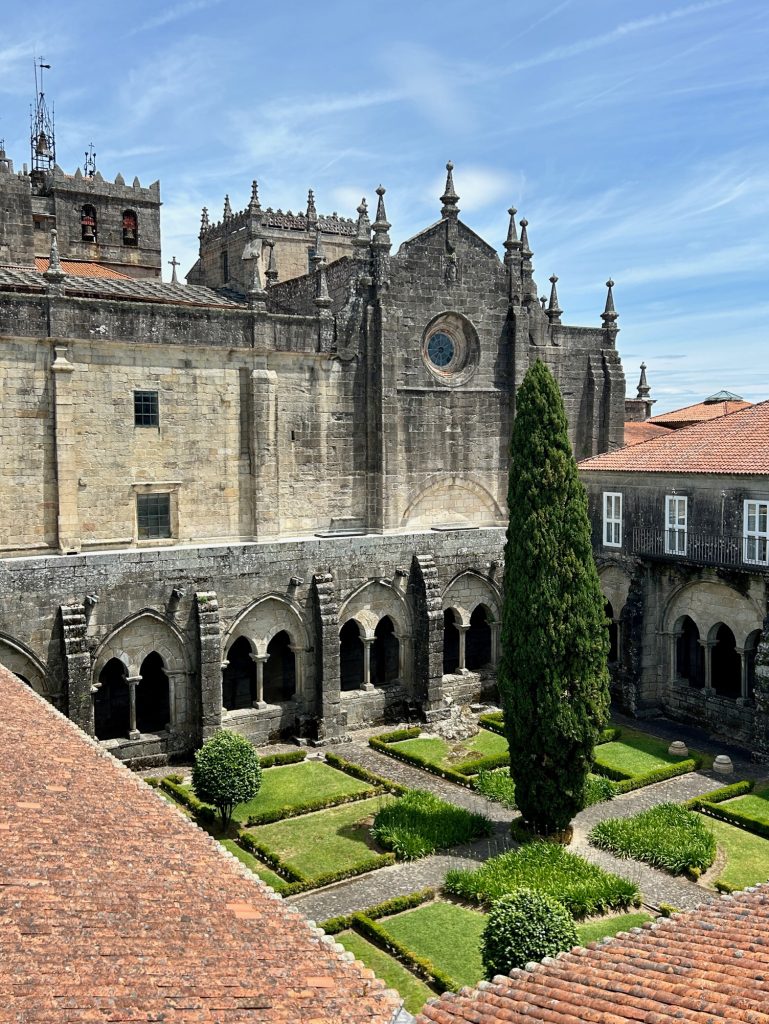
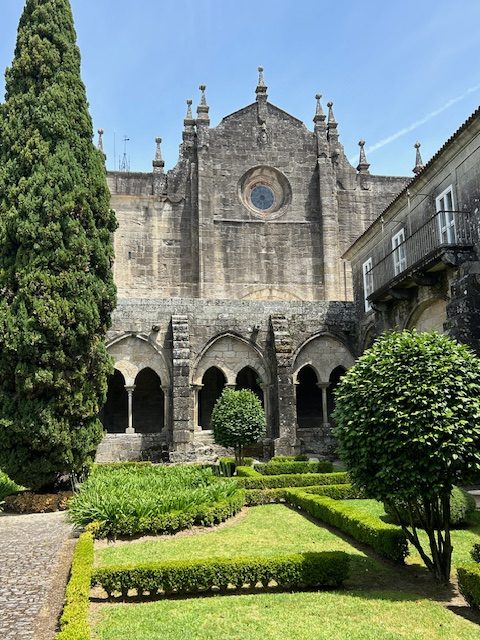
… and these show the magnificent Cloisters themselves…

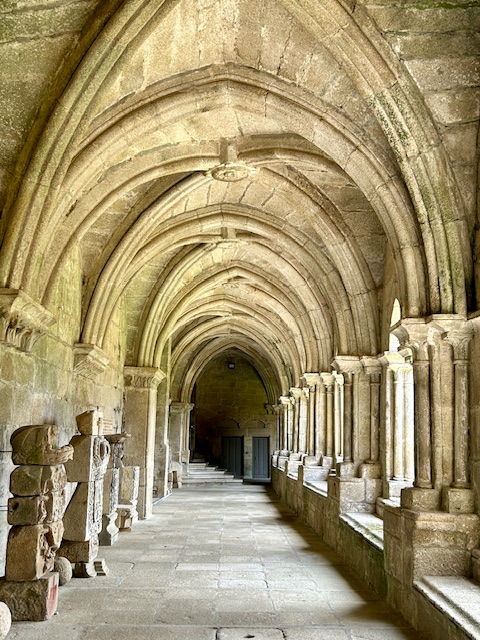
In the nave are two enormous richly decorated 18th century Baroque organs, partly hidden by huge buttresses installed to reinforce the cathedral walls. The second of the photos below is of the altarpiece in the Chapel of Relics.

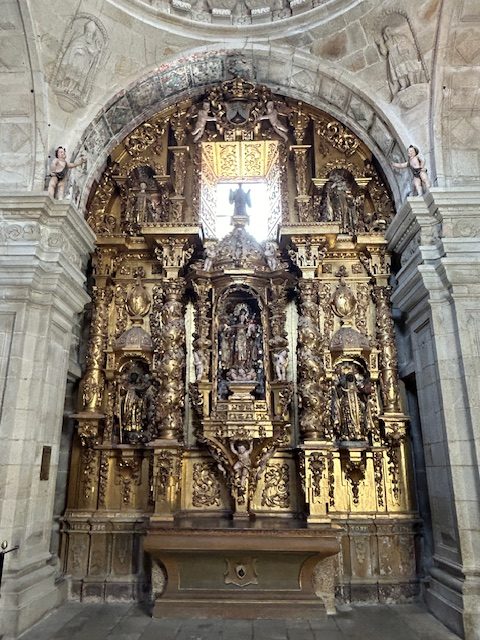
I spent a great deal of my time in the cathedral admiring interesting detail that seemed to be everywhere…
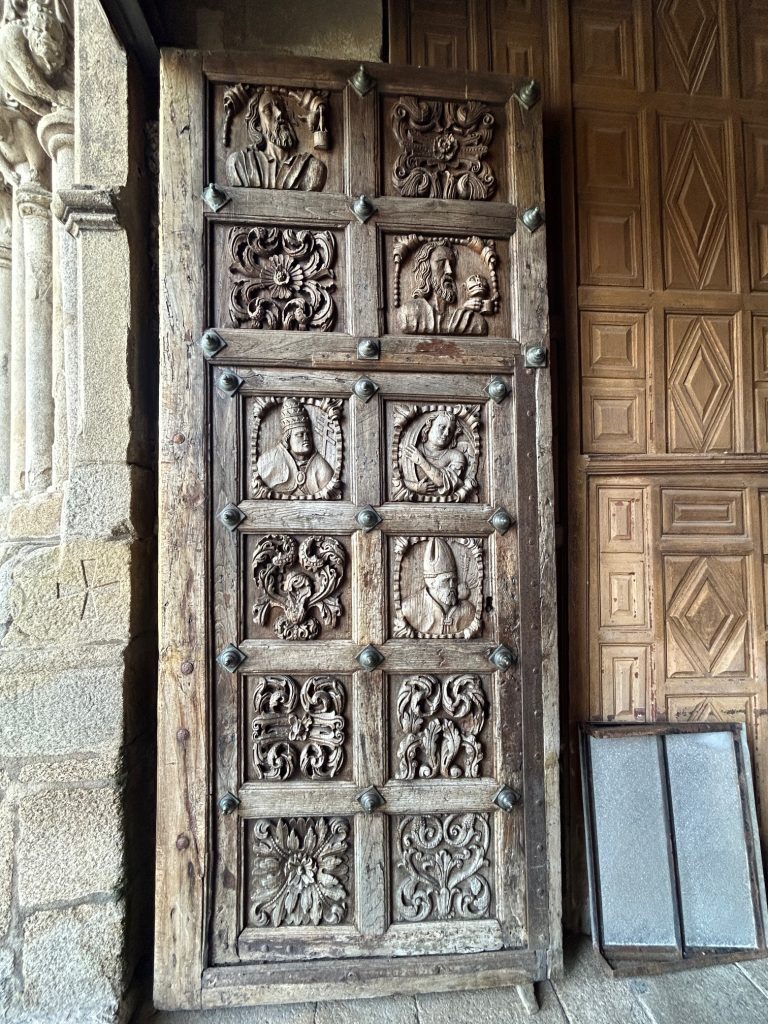

… and simply appreciating the views across the River Mino from the cathedral battlements…

After my somewhat extended visit to the cathedral we did a quick tour of the old town…
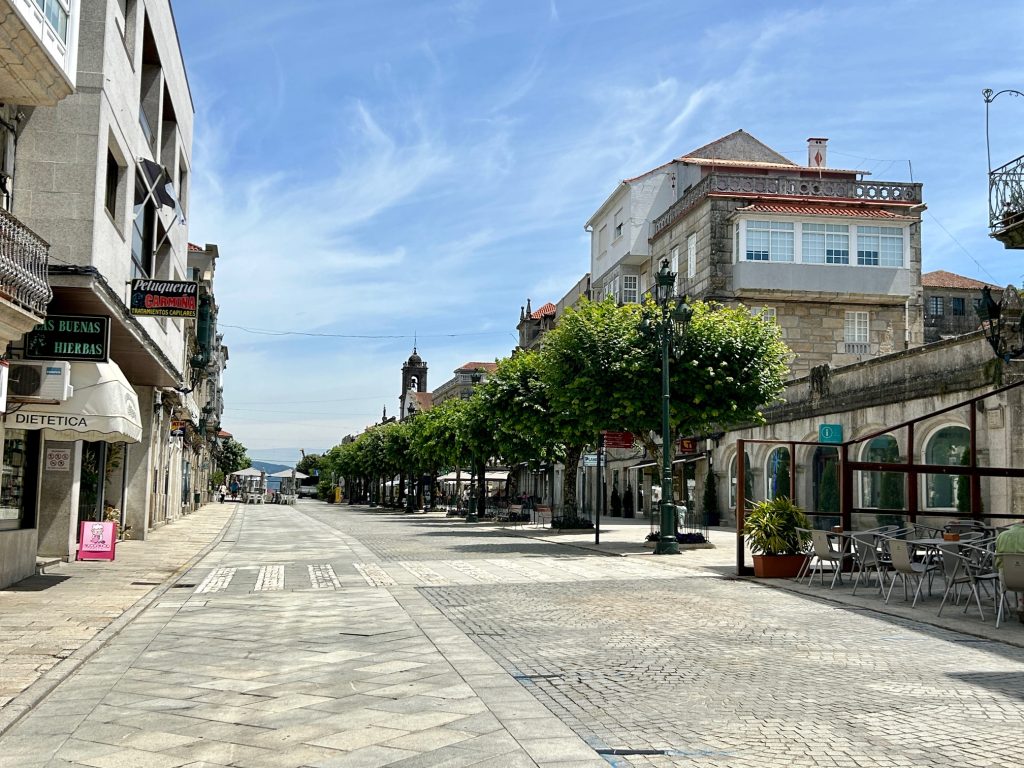
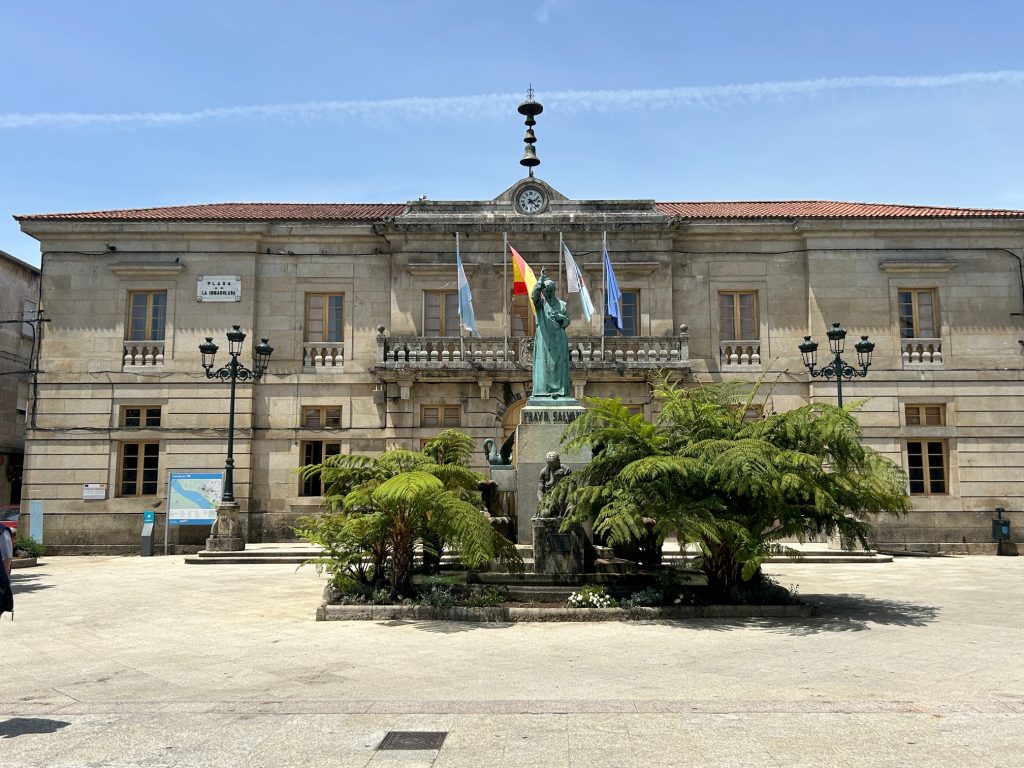
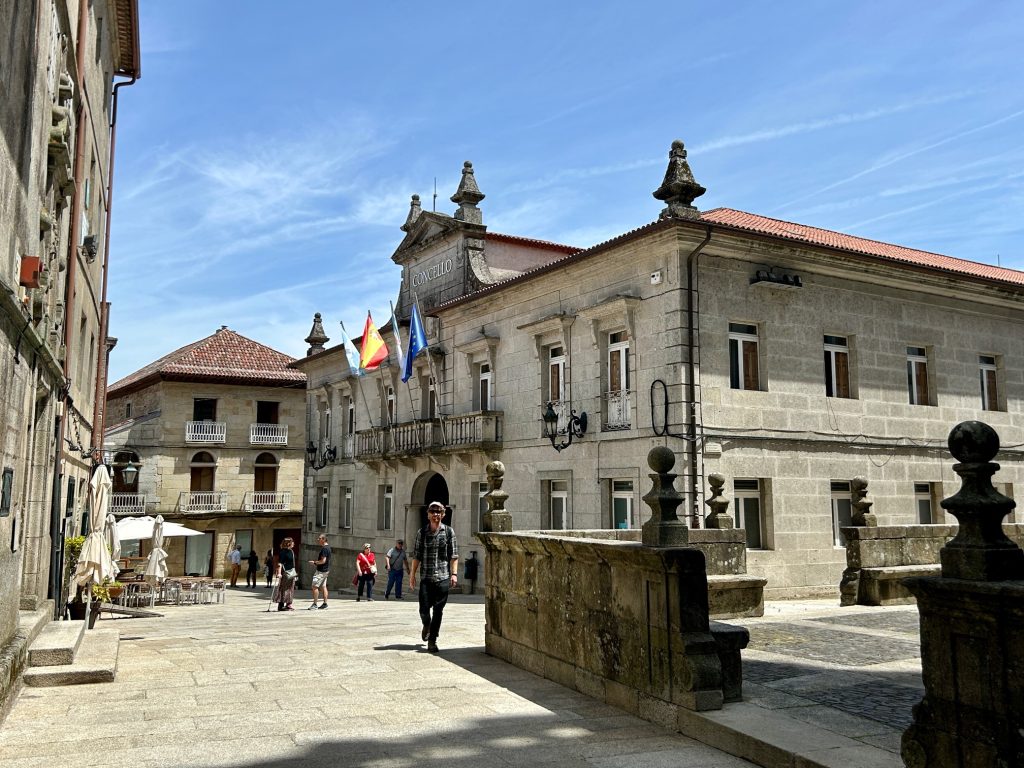
… and then paused for lunch at a cafe bar, El Cielo, before heading back to Oia.
I’ve mentioned previously that, given the current interest in caminos and the money they generate, it is only a matter of time before almost every city, town and village in Spain has a Camino running through it to Santiago. It came as no surprise therefore to learn that a second, shorter ‘Portuguese Camino’ now wends it’s way from Tui to Santiago. It matters not that Tui is in Spain and not Portugal; only that it borders Portugal and, most important, it is more than 100 kilometres from Santiago (116 kms to be precise) and so ‘pilgrims’ making the walk qualify for a pilgrim’s certificate. It’s happening sooner than I thought…



